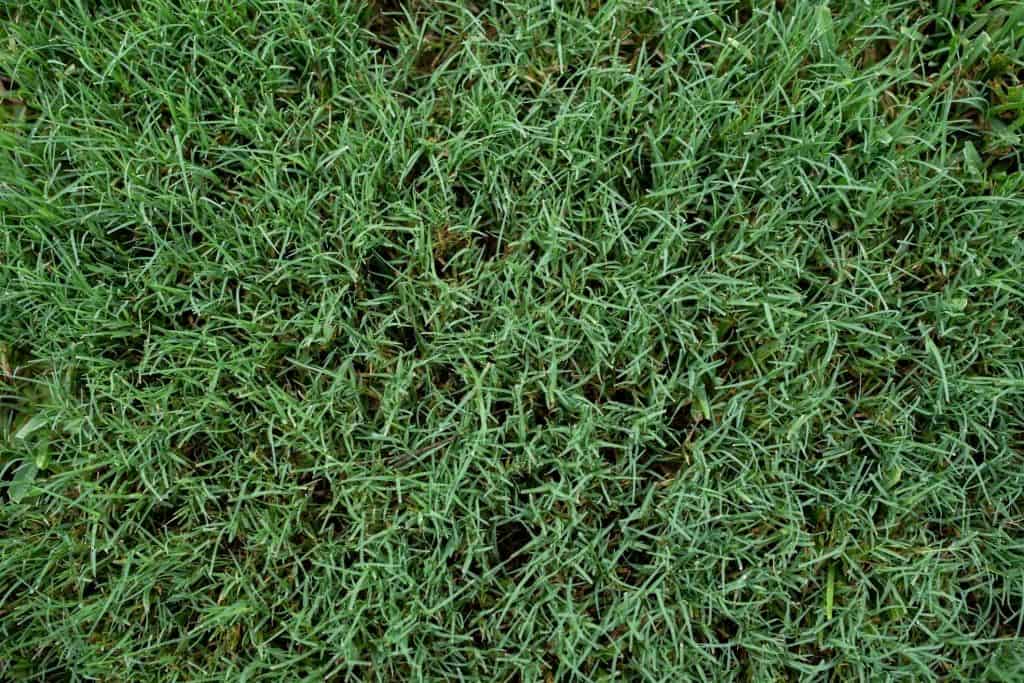Are you planning to put down a new lawn and have new grass installed? One thing you have to worry about is choosing the seed bag and grass variety best for you.
This is because there are various grass types to choose from, each having different tolerance depending on many factors. Plus, grass types would differ in look, maintenance, and establishment methods.
Two of the commonly used grass types are Bermuda and Zoysia grass, each having their pros and cons. Some people have wondered, ‘can I mix Zoysia and Bermuda grass?’ While people combine different grass varieties for a thicker lawn, you need to know if both varieties go well together.
Read on to find out!

Can I Mix Zoysia and Bermuda Grass?
Some people would mix two grass varieties as a way to thicken their lawns. While it may work, there are instances where this isn’t a good idea. This is because there are different factors to consider, such as the amount of sun and shade your lawn receives.
According to the University of Kentucky, Bermuda and Zoysia grass are common lawn grasses and are warm-season perennials that would grow actively throughout the summer, then grow dormant, losing their color come winter. They look similar and it’s hard to tell them apart… At times.
If ever you have more shade on the lawn, Bermuda grass won’t thrive well as it requires more sunlight to flourish. Depending on the amount of shade on your law, Zoysia grass will thrive.
Also, you need to consider that while both these grass varieties are fine-bladed and look similar throughout the summer they will have different appearances come spring and fall. The Zoysia grass will green up before the Bermuda grass, while the Bermuda grass falls dormant before the other variety. This will have your lawn look odd because of the different colors or shape the grass is on different sides or patches.
If you would like to mix both these grass varieties, this is up to you as both will thrive in the right conditions. But because of their different needs and looks, they may end up looking off at certain times of the year.
To help you further understand why it may not be best to mix Bermuda and Zoysia grass, here is a short description of each grass:
About Bermuda Grass

Bermuda is a drought-resistant grass variety that needs full sunlight exposure. It features a grayish-green color and a medium to coarse texture, tolerating heavy foot traffic.
It has hairless leaf blades with branches flower spikes that are about a quarter-inch wide. The grass can be established from seeds, plugs, sod, or stolons, spreading rapidly along the rhizomes and stolons. As it rains, Bermuda grass would green up quickly.
About Zoysia Grass

Based on a detailed coverage by CABI, Zoysia grass has similar characteristics to Bermuda grass but having more shade tolerance. It can tolerate heavy traffic and would go dormant throughout the drought season.
What makes it different is that Zoysia gives tighter sods compared to Bermuda, making it better when it comes to resisting weed invasion. However, it grows slowly among rhizomes and stolons, having a tough texture. This is why it is the hardest grass variety to grow!
While the most difficult to grow, they are more favored over Bermuda grass since there is less blue in the green and would stand more upright.
With their differences, you can see why it’s not recommended to mix them together. Zoysia plugs can’t compete with Bermuda grass, since the latter grows faster and more aggressively. Furthermore, there is a chance that Zoysia would choke out Bermuda grass, as this dense turf would reduce summer weeds and choke out surrounding grasses, especially when planted as plugs.
For those who do plan to mix Bermuda and Zoysia, it might be best to mix Zoysia sod over plugs or seed to prevent Zoysia grass from choking out other grasses from its surrounding area. Your area should also have at least 5 hours of full sun for Bermuda to grow well.
The Best Grasses to Mix
There are other grasses that are more suitable to mix with Bermuda or Zoysia.
For instance, Bermuda and Kentucky bluegrass are a great combination. Kentucky bluegrass is a warm-season grass while Bermuda grass is a warm-season grass, which will have your lawn look like it is actively growing grass throughout the growing season. With both of them present together, your lawn has the chance to sustain grass cover, preventing large bare spots.
As for Zoysia grass, you will do best with cool-season grasses like Bluegrass or Fescue. When planted together, it produces a mix of grasses that keeps lawns green all year long, though it depends on the region you’re from.
Wrapping It Up
To have a great-looking lawn, you’ll need to look into your area’s climate, maintenance, foot traffic, as well as the amount of sun and shade your lawn will receive. For those who have a combination of various conditions (like differing climates and sun or shade), then you can opt to blend grass varieties like Bermuda and Zoysia. However, take note that they may have different appearances come spring and fall, which can affect your lawn’s overall appearance.
I hope that this article on mixing Bermuda and Zoysia grass helped you out. If you have decided mixing these grass varieties, make sure you learn all about their needs and how to begin the seeding process. Good luck!